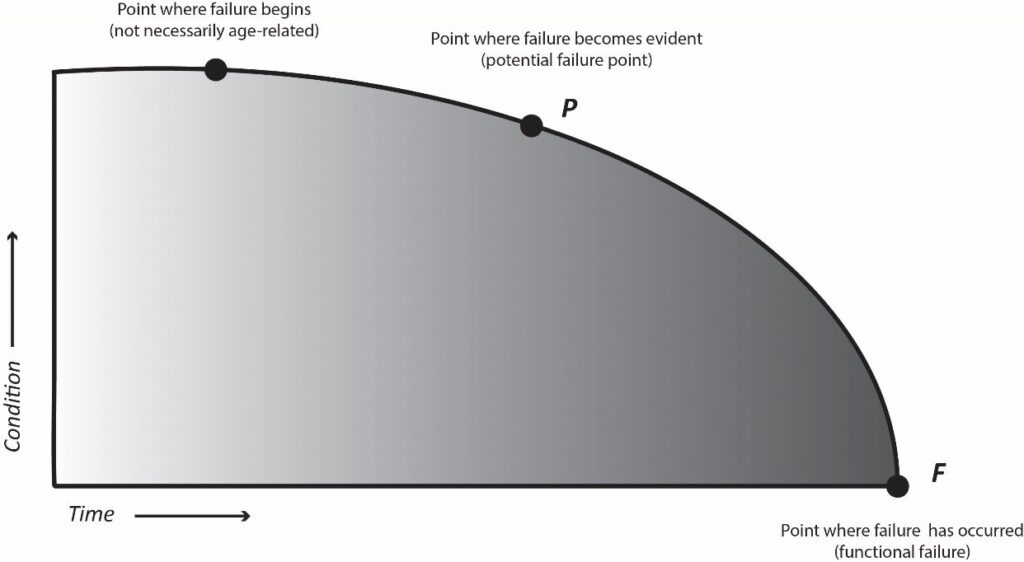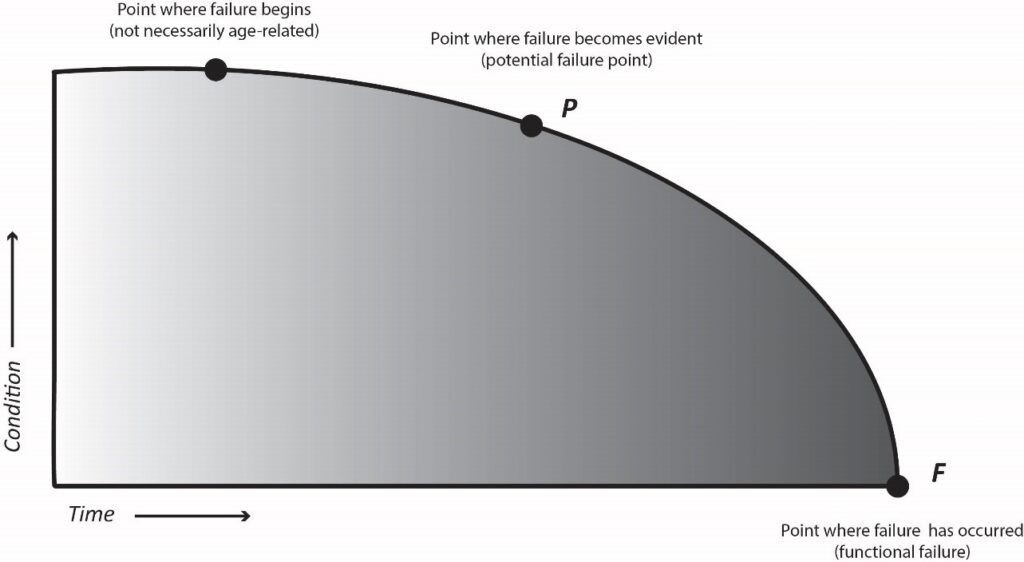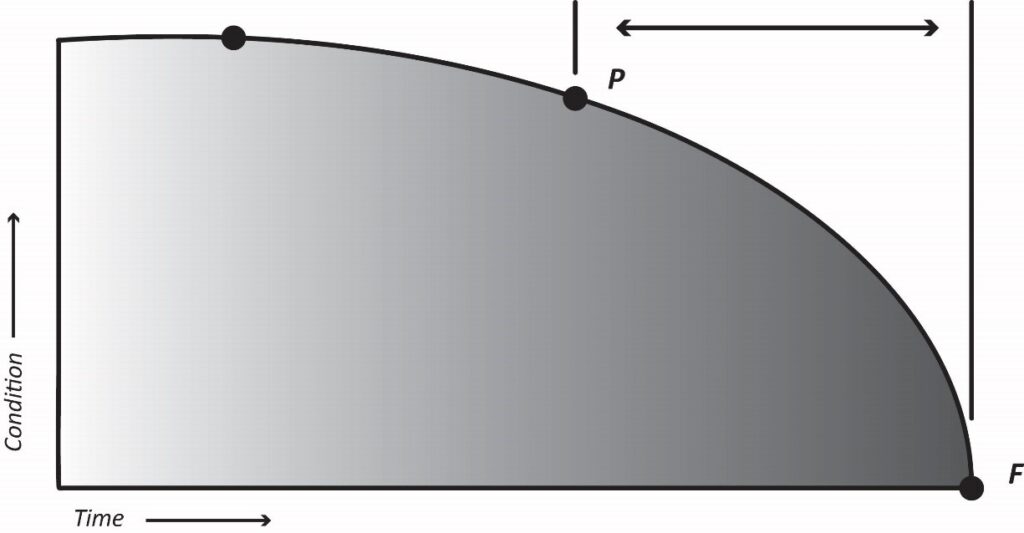The New Year is the perfect time to start new initiatives – everyone is relaxed from the holidays and ready for a fresh start. One resolution that should be on your list for the New Year is to improve your maintenance program. No matter how effective your current maintenance program appears, there are always opportunities for continuous improvement, including incorporating preventive maintenance and predictive maintenance.
When evaluating your maintenance program for potential improvements, it is important to start looking at the mix of strategies your facility is currently employing to manage risk of failure. Corrective maintenance, preventive maintenance and predictive maintenance strategies all have their place in effective maintenance programs.
In traditional maintenance programs, corrective maintenance dominates, with a focus on maintaining a store of spare parts, tools on hand and adequate man power to quickly perform repairs as needed to minimize downtime. Corrective maintenance strategies often remain the norm at facilities that lack sufficient resources or planning to implement preventive maintenance programs. Where corrective maintenance is the dominant maintenance strategy, the facility operates in reactive mode – essentially waiting for failures to occur before reacting to those failures. This strategy leads to increased downtime of critical assets thus jeopardizing regulatory compliance at your facility. The P-F Curve is an important tool for asset managers to assist with predicting potential failure of an asset.

Preventive Maintenance
Preventive maintenance focuses on preventing failures that are expected as part of the asset lifecycle. Preventive maintenance aims to attack potential failures before they turn into full functional failures by servicing or restoring equipment, or prevents failures by discarding worn out equipment before it fails. Preventive maintenance usually takes place on a time, run-time or number of cycles basis (every six months or every 6000 hours, every x revolutions, etc.) and uses some combination of experience, Original Equipment Manufacturer (OEM) recommendations and equipment history to assess (or guess) the best interval for preventive maintenance. It can be difficult to determine the effectiveness of preventive maintenance programs without allowing equipment to periodically fail. This means that in practice preventive maintenance programs often over-maintain equipment or underestimate equipment useful life in the interests of preventing potential failures. These two tasks – servicing and discarding equipment – may actually refer to the same task. For example, to maintain the function of a belt-driven pump, one might need to periodically replace the belt. In practice, this means discarding the belt at the end of its useful life. While this mode of maintenance is valuable, especially for assets that degrade at predictable rates, it can lead to unnecessary, premature or even counterproductive maintenance activities. Maintenance may take place before there is any evidence of failure, based on expected lifespan of assets or components rather than actual condition. Each scheduled maintenance overhaul or activity runs the risk of introducing human error or new functional failures into the system. As long as facilities feel comfortable with the level of spending they are incurring, and as long as failures are few and far between, preventive maintenance programs are presumed to “be working,” but this does not mean there is not room for improvement by reducing unnecessary maintenance further.

Predictive Maintenance
Although preventive maintenance strategies can offer an improvement over the reactive mode of traditional “fix it when it breaks” modes of maintenance, they still depend on the assumption that asset failure increases with age. In actuality, there is very little relationship between how long an asset has been in service and when it fails. For many assets, determining the optimal moment for maintenance tasks without interruption of service requires a different type of monitoring strategy.
Predictive maintenance, or condition-based maintenance, takes preventive maintenance strategies to their logical conclusion: looking for signs that the likelihood of failure is increasing at intervals that will allow sufficient time to take action to prevent that failure. Predictive maintenance, in its simplest form, uses the four senses (sight, sound, touch and smell) to determine the condition of an asset. Many facilities already employ a version of predictive maintenance in the form of operator routine duties that require operations staff to note any unusual sounds, smells, vibration, heat, visible degradation, oil leaks, etc. These are condition-based monitoring tasks. However, these tasks can provide only the roughest information about performance and likelihood of failure, and may provide insight into incipient failures too late for effective action. Only the most obvious failures can be identified, and only once they have progressed to the point of gross detection. Condition monitoring done this way usually does not provide much lead time to correct the potential failure, meaning that condition monitoring must be done frequently enough to ensure that failures are prevented. In the case of critical assets, there can be a fine line between detecting a potential failure, and the emergence of full functional failure.
Predictive maintenance aims to increase our ability to recognize potential failures before they become full functional failures, thus allowing us to plan maintenance at the optimal point to avoid failure, downtime and critical equipment damage that reduces the lifespan of assets. Using technology, we can increasingly monitor and predict potential failures with greater accuracy, finding potential failures long before significant damage is done. This can extend the life of assets by preventing equipment damage. A common example of the benefit of technologically augmented predictive maintenance is the use of vibration analysis to detect defects in ball bearings. Vibration analysis can alert us to subsurface defects in bearings before sufficient damage is done to bearing races to create vibration strong enough to register to the touch. We can then perform maintenance to minimize damage to the equipment and maintain high performance levels.

Asset Management and Predictive Maintenance
Asset management – managing assets for greatest possible return on investment or managing facilities to provide best value or service to facility owners/customers – is increasingly important in an era of shrinking budgets and increasing regulatory requirements. Managing assets is a general way of indicating the need for oversight and maintenance of equipment, human capital, structures and potentially other key but intangible elements such as reputation or public image. Asset management requires management of total asset lifecycle, from acquisition through operation and maintenance, to end-of-life and asset disposal. For highest return on investment, extending the amount of time the asset spends in operation generally increases the amount of value a facility can acquire.
The desire to increase the asset lifespan places maintenance at the center of asset management programs. Maintenance has become the central concern for facilities management, but many facility owners remain stuck in reactive mode out of the mistaken belief that they lack the resources or funding to implement proactive preventive and predictive maintenance strategies. But technological advances have reduced the cost of predictive maintenance, bringing predictive maintenance strategies within the budgets of most facilities. Thermography, vibration analysis, ferrography, water analysis, oil analysis, crack detection, infrared and ampere monitoring can provide insight into the condition of assets that can extend their useful life far beyond what is generally accepted. Predictive maintenance technology can reduce the frequency, severity and cost of repairs, while reducing the scheduling of unnecessary preventive maintenance tasks. The cost savings provided by predictive maintenance often exceed the costs of initiating a predictive maintenance program.
Predictive maintenance and condition-based monitoring may not be suitable for all assets. A Failure Mode Effects Analysis can be helpful in determining which assets, and which failure consequences, justify the use of augmented predictive maintenance technology.
Stay in the know.
Providing data-driven insights, perspectives, and industrial inspiration from the forefront of the reliability transformation.